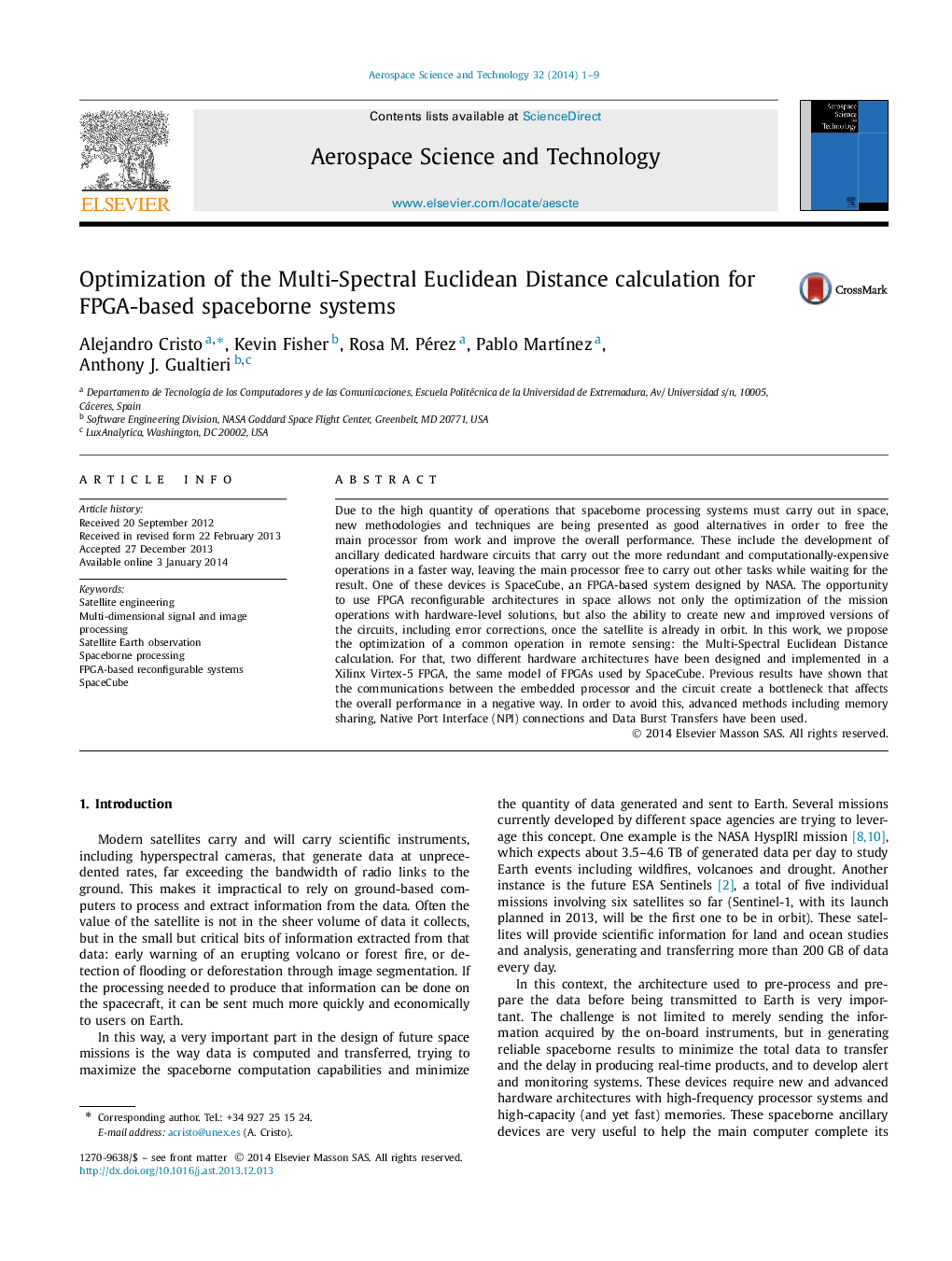| Article ID | Journal | Published Year | Pages | File Type |
|---|---|---|---|---|
| 1718088 | Aerospace Science and Technology | 2014 | 9 Pages |
Due to the high quantity of operations that spaceborne processing systems must carry out in space, new methodologies and techniques are being presented as good alternatives in order to free the main processor from work and improve the overall performance. These include the development of ancillary dedicated hardware circuits that carry out the more redundant and computationally-expensive operations in a faster way, leaving the main processor free to carry out other tasks while waiting for the result. One of these devices is SpaceCube, an FPGA-based system designed by NASA. The opportunity to use FPGA reconfigurable architectures in space allows not only the optimization of the mission operations with hardware-level solutions, but also the ability to create new and improved versions of the circuits, including error corrections, once the satellite is already in orbit. In this work, we propose the optimization of a common operation in remote sensing: the Multi-Spectral Euclidean Distance calculation. For that, two different hardware architectures have been designed and implemented in a Xilinx Virtex-5 FPGA, the same model of FPGAs used by SpaceCube. Previous results have shown that the communications between the embedded processor and the circuit create a bottleneck that affects the overall performance in a negative way. In order to avoid this, advanced methods including memory sharing, Native Port Interface (NPI) connections and Data Burst Transfers have been used.
